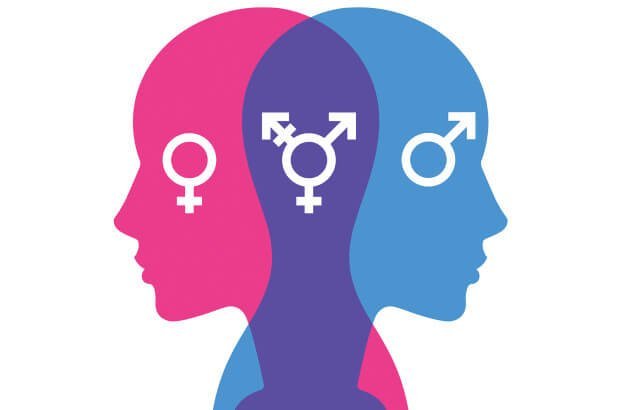Gender Dysphoria is a state of psychological distress and dissatisfaction that arise due to uncertainty about one’s gender identity or sexual orientation. According to the American Psychological Association (APA)’s Diagnostics Statistics Manual (DSM-5), Gender Dysphoria or Gender Identity Disorder is a marked incongruence between one’s experienced/expressed gender and the assigned gender. Though this gender discomfort is often seen to be exhibited in childhood some people may not go through it until after adolescence or adulthood.
Non-conformity with one’s sexual and gender identity can be determined using the following criterion which remains noticeable for at least 6 months duration are: –
Diagnostic Criteria (Signs and Symptoms) for Gender Dysphoria as per DSM-5: –
In Children
- A strong urge to be of the other gender or some choosing alternative gender different from one’s assigned gender.
- A strong preference for cross-dressing and cross-gender roles in fantasy play.
- A strong dislike of one’s sexual anatomy.
- A strong urge for the external and internal genitals that match one’s experienced gender.
- A strong liking for the toys, games, or activities stereotypically used or engaged in by the other gender.
In Adolescents and Adults
- A strong desire in females to prevent the development of the anticipated secondary sex characteristics like rounded figure, enlarged breasts, menstrual cycle, and the ability to nurse children.
- A strong desire in males to prevent the development of the anticipated secondary sex characteristics like facial and chest hair, upper body muscular build, higher pitch voice and enlargement of Adam’s apple.
- A strong urge for the primary and/or secondary characteristics of the other gender.
- A strong urge to be of the other gender or be treated as the other gender (or some alternative gender different from one’s assigned gender.
- A strong belief that one has the typical feelings and reactions of the other gender (or some alternative gender different from one’s assigned gender).
Causes of Gender Dysphoria
The causes of gender dysphoria cannot be properly stated but many types of research supposed its origin from a complex interaction of biological, psychological and social factors. Individuals with a group of genetic disorders that impact adrenal glands or disruptions in the regular endocrinology of sex determination before birth are more prone to develop symptoms of Gender Dysphoria. Some research also indicates that certain social factors like children’s dynamic relation with parents and peers, physical or sexual abuse, neglect and maltreatment can be attributed to the prognosis of Gender Dysphoria.
But these neuroanatomical and socio-environmental factors need more research for a conclusive aetiology.
Psychological Impact of Gender Dysphoria
The discontent with own sex or assigned gender can generate puzzling behaviour which in most cases can be vividly seen in terms of social isolation, loneliness, anxiety and depression. Victimization and stigmatization of people with gender dysphoria by society causes extensive emotional stress. The expressed desire to be perceived and treated as another gender often become non-conforming in the lenses of certain social mirrors. This discrepancy can cause substantial impairments in social, occupational, and daily life functioning.
The biological causes associated with gender dysphoria in adults and children can increase the risk of psychiatric illnesses like schizophrenia and autism spectrum disorder.
Psychotherapy
Though the nature of Gender Dysphoria is highly debatable between being a mental health problem or an anatomical condition, the stigmas and emotional stressors attached to it do requires psychological interventions. Complaints like depression, stress, anxiety and suicidal ideation can be remediated by following psychotherapies: –
- Person-Centred Therapy: Using a nondirective and empathic approach to empower and motivate client, this Rogerian therapy establishes a belief that every human being strives for and has the capacity to fulfil their potential. Rather than viewing people as flawed, with troublesome behaviour and thoughts, person-centred therapy acknowledges the capacity and will-power of the client for their personal growth while inducing self-understanding to strive for balance and order and to tackle greater complexities in life.
- Existential Therapy: This unique form of psychotherapy is based upon the fundamental belief that all people experience inner conflict caused by an individual’s confrontation with the certain conditions inherently present in human life. Rather than placing emphasis on previous events like in other therapies, existential therapy uses the philosophical context of insight to guide towards accepting fears and take responsibility for the decision. It directs self for liberation and let go of despair associated with biases and feeling of self-worthlessness.
- Cognitive Behavioural Therapy (CBT): A talking therapy that lets you connect with your thoughts, feelings, physical sensations and actions, thereby helping you to manage your problems by changing negative thought patterns and behaviours. It deals with improving the present state of mind with more structured, objective and realistic thoughts.
- Family Therapy: Family Therapy is a type of psychological counselling that aims to promote understanding among family members, improve communication, resolve conflict and enhance their sense of connection to one another. LGBTQ families are more likely to face societal stigmas triggering emotional hardships, isolation, interpersonal differences and behavioural problems. Family therapy uses a collaborative approach to understand, confront and change family dynamics by educating them about gender, sexual identity and issues of a heterosexual and cisgender family member.
- Child and Adolescent Counselling: There are lot of misconceptions while understanding and accepting divergent sexual orientation of child and adolescent. For a child, it becomes extremely difficult to convey how they feel towards another gender when it seems to be different from established social norms. Child and Adolescent Counselling provide a safe and comforting space to express themselves. It helps child/adolescent to cope up with the challenges they face regarding their sexual behaviour and gender identity. Child and Adolescent Counselling enables them to adapt to their challenges, learn skills to manage their emotions and foster confidence while dealing with social, emotional and cognitive difficulties.
Take Gender Dysphoria counselling online at TALKTOANGEL.COM
Read also:
17 Benefits of Nature in Improving your Mental Health
How to Overcome Imposter Syndrome

